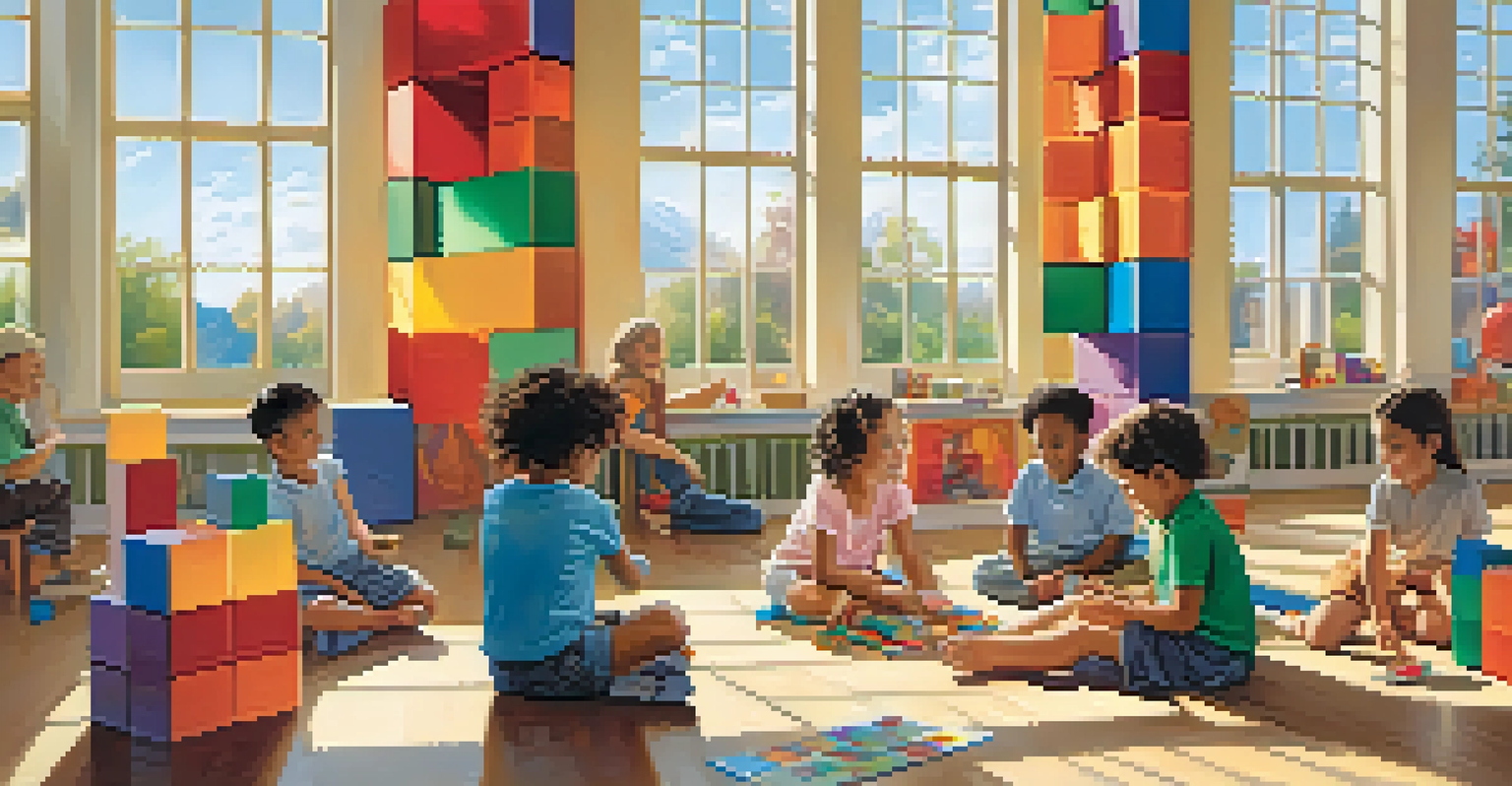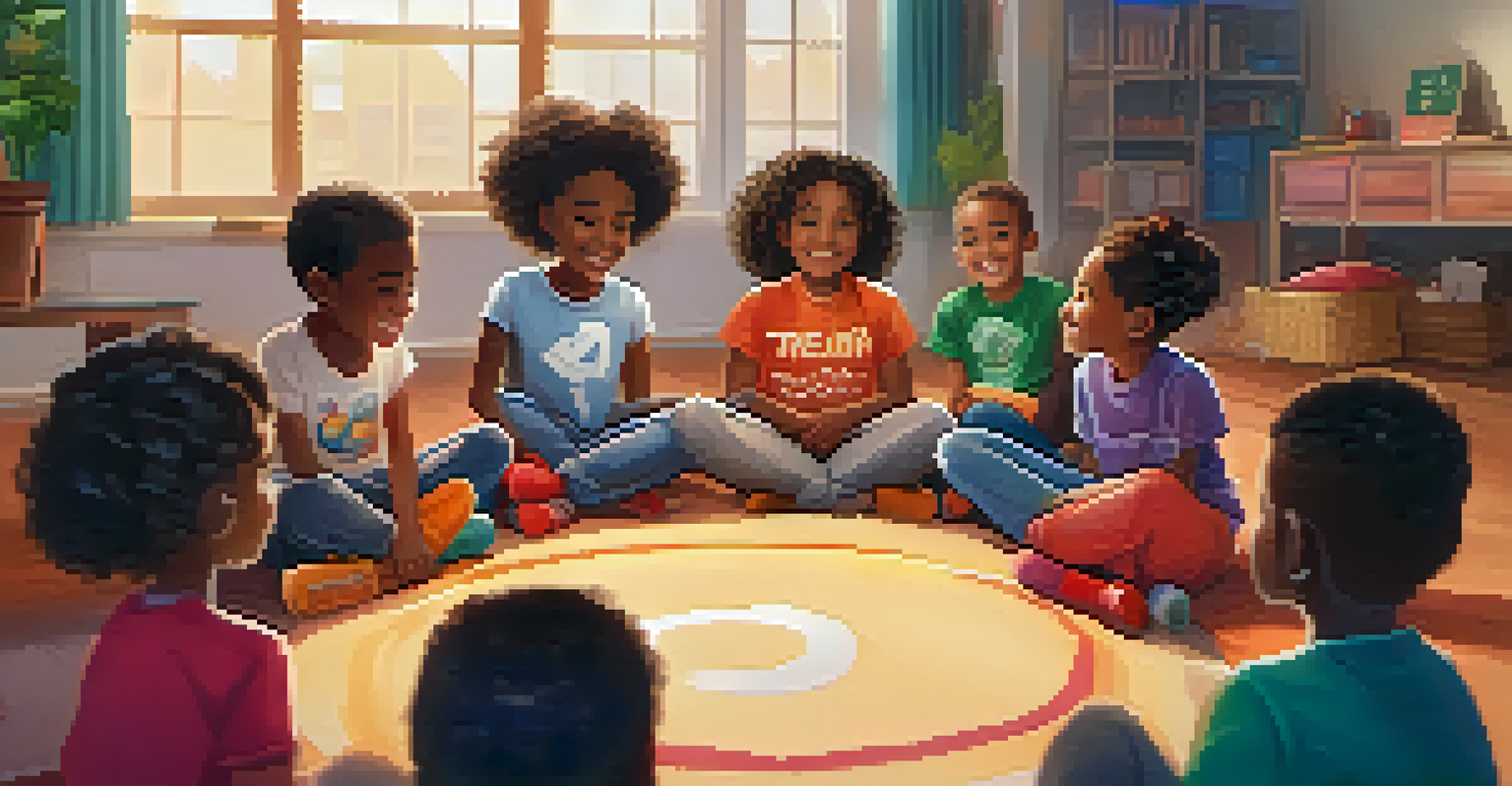Collaborative Learning in Early Childhood Education: An Overview

Understanding Collaborative Learning in Early Education
Collaborative learning is a teaching approach where children work together to achieve a common goal. In early childhood education, this method fosters teamwork, communication, and problem-solving skills. Imagine a group of children building a tower with blocks; they must share ideas and negotiate their plans to create something together.
Collaboration is the essence of life. The ability to collaborate effectively can lead to great success.
This interactive style of learning differs from traditional methods, which often focus on individual achievement. By prioritizing group activities, educators help children develop social skills and emotional intelligence. For instance, when kids collaborate on a project, they learn to listen to each other and respect differing opinions.
Furthermore, collaborative learning creates a supportive classroom environment. Young learners feel valued when they contribute to a group effort, boosting their confidence and motivation. Ultimately, this approach lays the foundation for lifelong learning by emphasizing the importance of cooperation.
Key Benefits of Collaborative Learning
One of the most significant benefits of collaborative learning is enhanced social skills. Children learn to communicate effectively, practice empathy, and resolve conflicts. For example, when a disagreement arises during a group activity, kids must discuss their perspectives and find common ground, teaching them valuable negotiation skills.

Additionally, working in teams encourages critical thinking and creativity. When children brainstorm ideas together, they can build on each other's strengths and come up with innovative solutions. Picture a scenario where kids are designing a poster; their varied ideas will lead to a more vibrant and engaging final product.
Benefits of Teamwork in Learning
Collaborative learning enhances social skills, critical thinking, and creativity among children.
Moreover, collaborative learning provides opportunities for peer teaching. As children explain concepts to one another, they reinforce their understanding and gain new insights. This reciprocal teaching method not only deepens comprehension but also fosters a sense of community within the classroom.
Creating a Collaborative Learning Environment
To cultivate a collaborative learning environment, educators should design activities that require teamwork. Simple tasks, like group art projects or science experiments, can inspire cooperation and creativity. When children are engaged in a shared goal, they are more likely to contribute their ideas and work together.
Alone we can do so little; together we can do so much.
It’s also essential to establish clear expectations for group work. Teachers can guide students in setting roles within their teams, encouraging accountability and ensuring everyone participates. Think of it as a sports team, where each player has a position; this structure helps kids understand their responsibilities.
Finally, fostering a sense of community is crucial for successful collaboration. Teachers can create routines and rituals that promote inclusivity, like circle time discussions or team-building games. When children feel safe and connected, they are more willing to collaborate and take risks in their learning.
Challenges of Collaborative Learning
While collaborative learning has many benefits, it’s not without its challenges. One common issue is uneven participation, where some children may dominate the discussion while others remain passive. This can hinder the learning experience for everyone involved, as not all voices are heard.
To address this, educators can implement strategies to ensure equitable participation. Techniques such as assigning specific roles during group activities or using 'talking tokens' can help manage contributions and keep everyone engaged. These methods encourage quieter children to share their ideas without feeling overshadowed.
Creating a Supportive Environment
Establishing clear expectations and fostering a sense of community are essential for effective collaboration.
Another challenge is managing group dynamics, as conflicts may arise among students. Teachers need to be prepared to facilitate discussions and mediate disagreements constructively. By guiding children through conflict resolution, educators can help them develop important interpersonal skills.
Role of the Educator in Collaborative Learning
Educators play a crucial role in fostering collaborative learning. They must create an inclusive atmosphere where every child feels comfortable sharing their thoughts. This might involve modeling effective communication and demonstrating how to work together respectfully.
Moreover, teachers should be active participants in group activities, providing guidance and support as needed. By engaging with students, educators can help steer conversations and encourage critical thinking. Imagine a teacher asking probing questions during a group project to prompt deeper discussions among students.
Finally, ongoing assessment is vital for understanding group dynamics and individual contributions. Educators can observe interactions and provide feedback to help students improve their teamwork skills. This reflective practice ensures that collaborative learning remains a valuable experience for all children.
Real-Life Examples of Collaborative Learning
Schools across the globe are successfully implementing collaborative learning strategies. For instance, some classrooms use project-based learning, where students work in teams to tackle real-world problems. This hands-on approach not only fosters collaboration but also connects classroom learning to everyday life.
Another example is the use of learning stations, where children rotate through various activities that require teamwork. Each station is designed to promote different skills, such as communication or creativity, allowing children to work together in diverse settings. This variety keeps the learning experience fresh and engaging.
Role of Educators in Collaboration
Educators must actively facilitate group activities and ensure every child feels included to promote successful teamwork.
Additionally, many educators incorporate technology to facilitate collaboration. Tools like shared digital platforms allow children to work together on projects, even from different locations. This modern approach not only enhances teamwork but also prepares kids for the increasingly digital world.
Future Trends in Collaborative Learning
As education continues to evolve, collaborative learning is likely to become more prominent. With a growing emphasis on social-emotional learning, teachers will increasingly integrate group work into their curricula. This shift acknowledges the importance of interpersonal skills in a child's overall development.
Furthermore, advancements in technology will enhance collaborative learning opportunities. Virtual reality, for example, could allow children to collaborate in immersive environments, promoting teamwork in exciting new ways. Imagine students exploring a virtual ecosystem together, discussing their findings as they navigate the experience.

Finally, educators will place greater focus on inclusivity within collaborative learning. Developing strategies to engage all learners, including those with diverse needs, will become a priority. By ensuring that every child can participate fully, we can create a richer, more equitable learning environment.